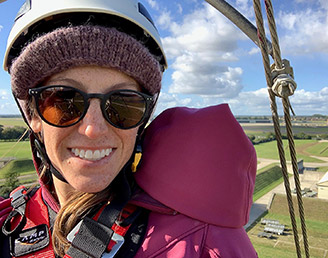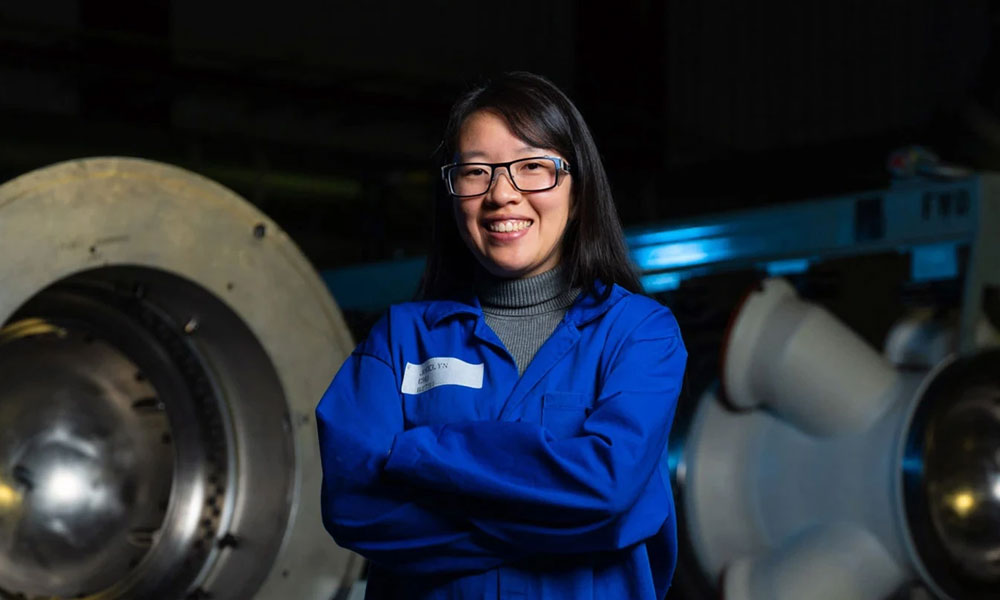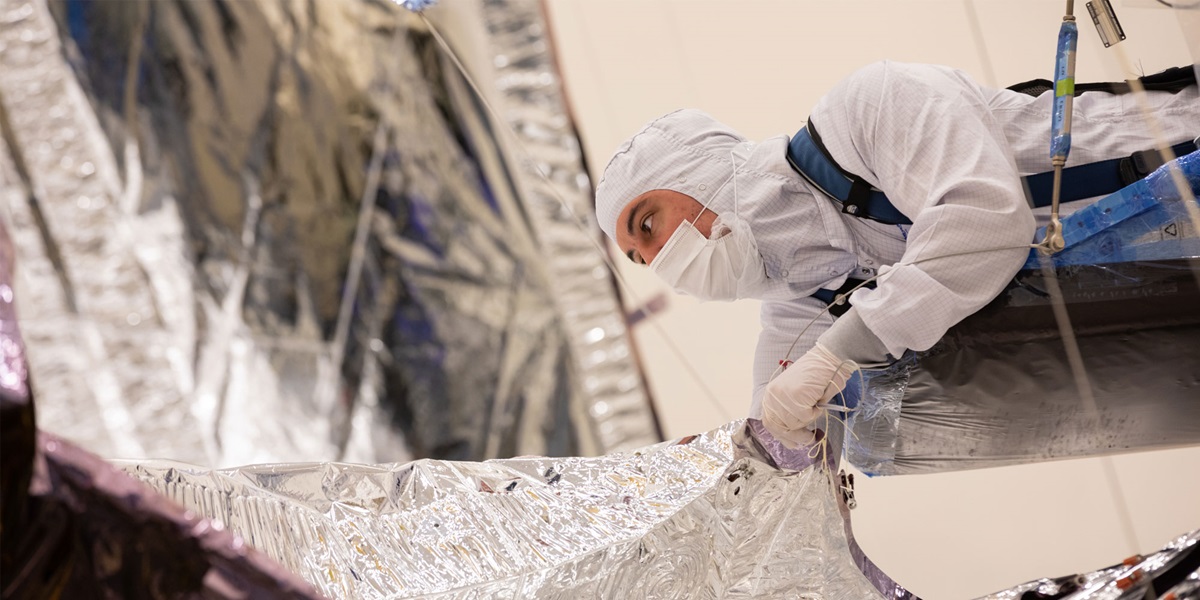By Stephanie Flyger
If there’s one thing true about Claire, it’s that she can’t be contained: not by a stereotype and not by a desk.
Fortunately, as a Northrop Grumman field engineer in Colorado Springs, Colorado, she doesn’t have to be — her job takes her around the world and is essentially one she’s been preparing for since she was a kid.

“Anytime my dad, who worked in construction, had a concrete-pouring job, my sisters and I were always there. We were basically his most relied-on employees,” Claire said with a laugh.
Since she was 4 years old, Claire tagged along to her dad’s construction sites in her hometown of Raton, New Mexico. From the age of 7, she was put to work on the buildings that her parents owned.
“We would have to tar roofs all summer long, hauling tar buckets and brooms up and down a ladder on three-story buildings,” said Claire. “I don’t think I was given the chance to be afraid of heights.”
Entirely unknown to her at the time, those heights would stay a familiar friend throughout her career.
Her Future Up in the Air
That inclination for hands-on work she learned from her father spilled over into college. Welding, gunsmithing and a part-time job in an explosives lab were some of her extracurriculars, alongside being a student athlete pursuing a mechanical engineering degree.
However, when she graduated, Claire didn’t want to be an engineer anymore. In her mind, engineers spent their days at a computer, which didn’t fit her active lifestyle. Then she discovered an engineering role that used all of her skills, including the rhythm of a hard day’s work outside, like she learned in childhood.
Today, Claire is the first female field engineer for Northrop Grumman’s Ionospheric Ground Sensors (IGS) program. She and her team travel to the ends of the Earth — literally — for installation, surveys and maintenance on 100-foot towers in places like Guam, Australia and Greenland. The towers provide weather data for the U.S. Space Force which is used by warfighters to make mission-critical decisions, as weather plays a vital factor in communication and navigation signals.
The 14 towers are spread across the world because the ionosphere, a layer of the Earth’s atmosphere which is able to reflect radio waves, is different everywhere and continuously moving. The more towers covering different sections of the atmosphere, the more accurate the data.
Some tower locations are so remote that flights only go in and out every two weeks, and emergency services are limited. Recognizing the risks this presents, the team has an intense focus on safety and all IGS field engineers are safety and rescue certified.
“We are each other’s rescue, and if something happens to one of us climbing the towers, we all know how to climb up and rescue that person and bring them back down to the ground. Thankfully we haven’t had any close calls; we’re all very cautious.”
— Claire, Ionospheric Ground Sensors Engineer
“We are each other’s rescue, and if something happens to one of us climbing the towers, we all know how to climb up and rescue that person and bring them back down to the ground,” said Claire. “Thankfully we haven’t had any close calls; we’re all very cautious.”
Knowing the Ropes
It takes a lot of diligent labor to keep the towers in working order, especially as they endure the elements. One location in particular, Ascension Island in the South Atlantic Ocean, gets hit with a lot of corrosion. For Claire, that meant using a grinder and wire brush to first scrub and then repaint every part of the corroding metal, a process which took more than 30 trips up and down the tower.
To prepare for the expedition, she turned to one of her favorite hobbies: rock climbing.
“For weeks, I was going to the rock-climbing gym and climbing up but then also downclimbing all the routes,” said Claire. “I was getting very strange looks from other climbers because climbing back down is not something people normally do.” She trained this way because on the towers, there is no rope system to repel down, and she wanted to strengthen her muscles for all the descents.
Claire’s familiarity with ropes, harnesses and tying knots gave her an initial edge when she first joined Northrop Grumman five years ago, and her drive for the unconventional has continued to lead her to new heights in her career. For her, being away from home for weeks at a time, the weariness of jet lag and intensive labor at 100 feet in the air is worth it to join her team in defining possible from all corners of the Earth.
It’s just another way she’s showing the world that she can’t be contained, not even by gravity.

Life at Northrop Grumman: Recent Stories
Shape your career journey with diverse roles and experiences that expand your expertise, feed your curiosity, and fuel your passion.

Life at Northrop Grumman: Archived Stories
It takes every one of us to make the impossible a reality. See what life is like at Northrop Grumman.